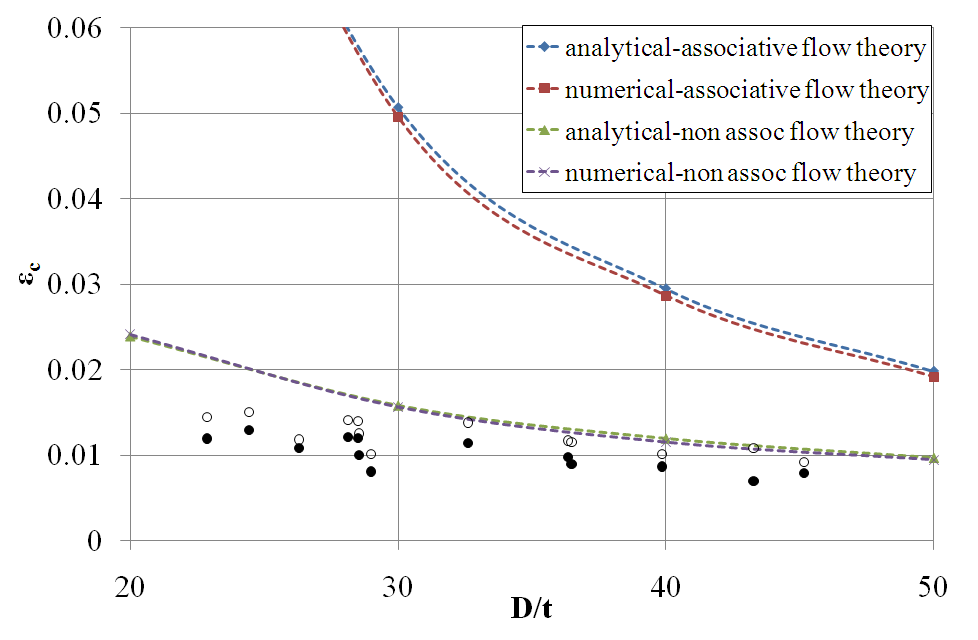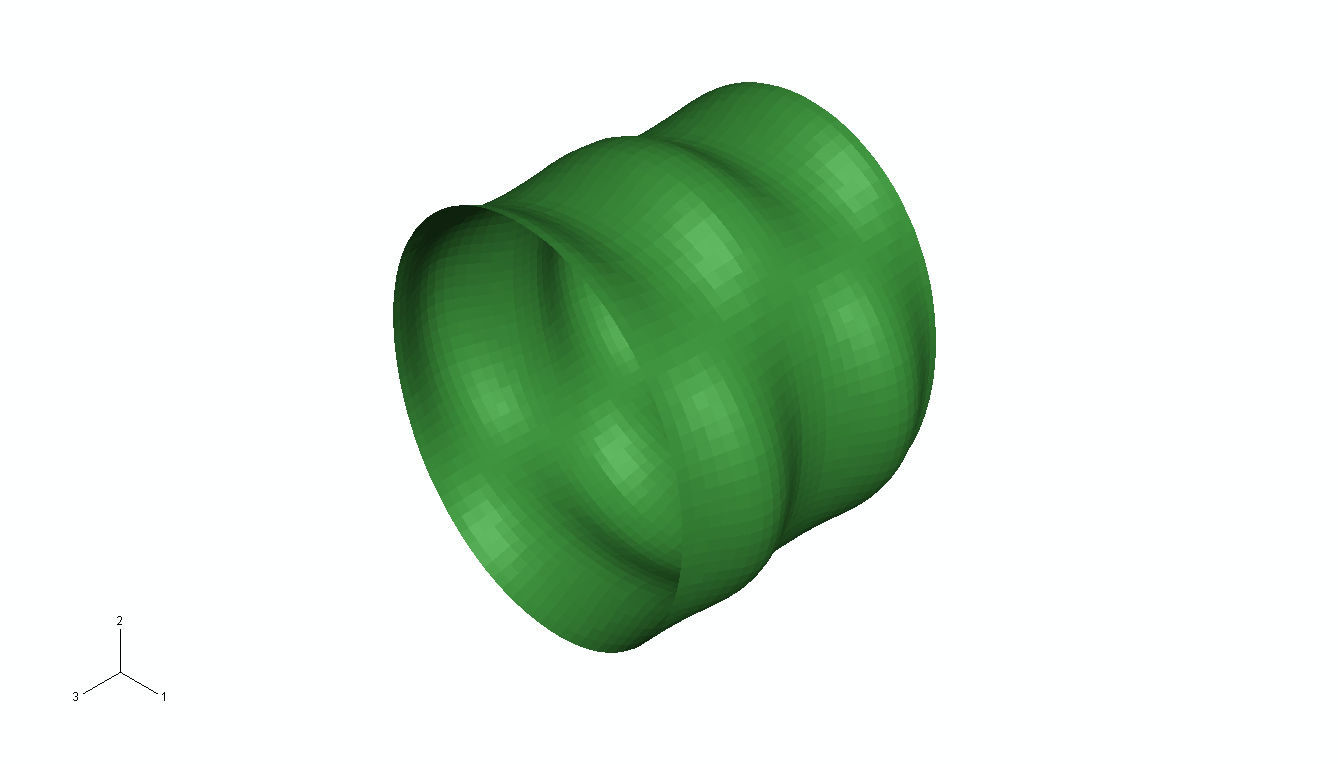Structural Stability of Cylindrical Steel Shells in the Inelastic Range
Summary:
The research is aimed at developing advanced numerical tools for the simulation of shell buckling and post-buckling behavior, in the plastic range. This work describes a J2 non-associative plasticity model, which takes into account the "corner-like" effects at the loading point on the yield surface, and is suitable for shell buckling calculations. The principle to be held in this work, when choosing a plasticity model, is that it can only be reliable and as sophisticated as the experimental information on which the determination of the model parameter is based.
Analytical and numerical predictions of structural buckling in the inelastic range are in closer agreement with test results when deformation-plasticity theory moduli are employed, instead of flow-plasticity moduli. This is attributed to the "softer" moduli of the deformation theory, simulating a "vertex" or "corner" (i.e. a high-curvature region on the yield surface at the point of loading on the yield surface), denoted in experimental observations.
The justification of the bifurcation predictions of deformation theory is related to the possibility that a vertex may develop on subsequent yield surfaces at the point of loading. A vertex forms on the yield surface is very important in cases, where strong deviations from proportional loading occurs, e.g. in predictions of plastic instabilities. An experimental investigation of the effect of an abrupt strain path change has been carried out recently by Kuwabara et al. (2000), for the aluminum alloy and steel. The measured stress paths clearly showed a yield surface vertex at the point of loading, a bit sharper for the aluminum than for the steel.
It has been widely recognized that although J2-flow theory can accurately describe the general material behavior of metal components in the inelastic range, bifurcation predictions based on the J2-flow theory may not be reliable in cases where buckling occurs well into the inelastic range. On the other hand, J2-deformation moduli may provide a much more reliable prediction of buckling load. To account for this discrepancy, the flow theory is used to trace the load-displacement equilibrium path, whereas the J2-deformation moduli are employed to detect bifurcation on the primary equilibrium path (Ju and Kyriakides, 1992).
The present work focuses on the development and the numerical implementation of a special-purpose constitutive model, suitable for large-scale bifurcation computations within a finite element framework. It is based on the von Mises yield surface (J2 plasticity) and the rate form of J2 deformation theory, it accounts for large strains, and leads to a non-associated flow rule. The numerical implementations follow an Euler-backward and an Euler-forward substitution scheme, developed for elastic-plastic shell analysis, accounting for zero normal stress through the shell thickness. The previous model is incorporated within an in-house special-purpose finite element technique for the nonlinear analysis of cylindrical shells. The model is incorporated in a nonlinear cylindrical shell finite element methodology, where the shell is described through a Lagrangian approach with convected coordinates and discretization is considered through a three-node “tube element”. The above technique is suitable for identifying bifurcation and determining post-bifurcation behavior of the steel cylinder under compressive loads (uniform compression or bending).
People: Patricia Pappa
Spyros A. Karamanos
Relevant Publications:
- Pappa, P., and Karamanos, S. A., "Numerical Implementation of J2 Non-Associative Flow Plasticity Models.", 10th International Conference on Computational Plasticity, COMPLAS X, Barcelona, Spain, September 2009.
- Pappa, P., and Karamanos, S. A., "Numerical Implementation of J2 Non-Associative Flow Plasticity Models for Shell Buckling in the Inelastic Range.", 7th GRACM International Congress on Computational Mechanics, Athens, Greece, June 2011.
- Pappa, P., and Karamanos, S. A., "Non-Associative Constitutive Model and Numerical Implementation for Buckling Calculations in Cylindrical Steel Shells.", 6th International Conference on Thin Walled Structures, Timisoara, Romania, September 2011.
- Pappa, P., and Karamanos, S. A., "Buckling and classification of high-strength steel CHS tubular members under axial compression and bending.", 14th International Symposium on Tubular Structures, London, Sept. 2012.
Figures:

Figure 1: Critical stress (onset of wrinkling) vs. specimen D/t

Figure 2: Critical strain vs. specimen D/t


Figure 3: Bifurcation modes